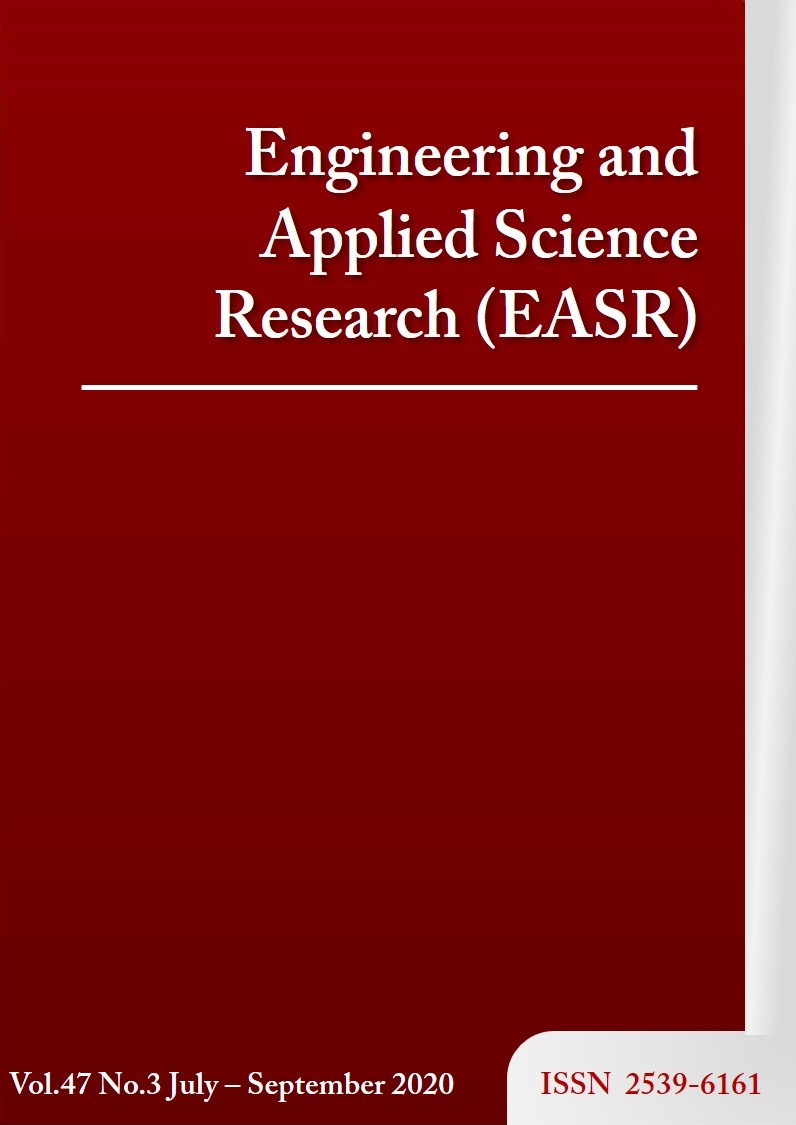Modeling and critical analysis of material removal rate in WEDM of Oil Hardening Non Shrinking Die Steel (OHNS)
Main Article Content
Abstract
Wire EDM is a complicated machining process that is used for producing complex 2D and 3D shapes. In this work, the process parameters associated with the wire electrical discharge machining (WEDM) of oil hardening non-shrinkage (OHNS) die steel material were investigated through response surface method (RSM) and an artificial neural network (ANN). A quadratic model developed through RSM was used to predict material removal rate (MRR) with appreciable precision. The various input variables, viz. pulse on time (PON), pulse off time (POFF), wire feed rate (WFR) and input current (I), have been considered. A comparison between the predicted and measured values of MRR was performed for each experiment. It was noted that the RSM predicted values are in a 95%confidence interval. Statistical analysis shows the capabilities of the developed models to predict the MRR more accurately. Also, ANN model estimates MRR with high precision compared using the RSM model. Support vector regression (SVR) is also used to analyze the impact of various process parameters. The results show that all approaches are strongly capable of predicting the response. Analysis the WEDM is a very effective. Of the three approaches ANN is superior.
Article Details
This work is licensed under a Creative Commons Attribution-NonCommercial-NoDerivatives 4.0 International License.
References
Ilhan AS, Mehmet C. Modeling and prediction of surface roughness in turning operation using ANN and multiple regression method. Expt Syst App.2011;38: 5826-32.
Phate MR, Tatwawadi VH. Mathematical model of material removal rate and power consumption for dry turning of ferrous material using dimensional analysis in Indian prospective. Jordon J Mech Ind Eng. 2015;9(1):351-62.
Phate MR, Tatwawadi VH, Modak JP. Formulation of a generalized field data based model for the surface roughness of aluminum 6063 in dry turning operation. New York Sci J. 2012;5(7):38-46.
Gaitonde VN, Karnik SR, Figueira L, Davim JP, Performance comparison of conventional and wiper ceramic inserts in hard turning through artificial neural network modeling. Int J Adv Manuf Tech. 2011;52:101-14.
Girish K, Kuldip S. Predictive modeling and optimization of machining parameters to minimize surface roughness using artificial neural network coupled with genetic algorithm. Procedia CIRP. 2015;31:453-8.
Phate MR, Tatwawadi VH. ANN based model development for material removal rate in dry turning in Indian context. Int J Mech Aero Ind Mechatron Manuf Eng. 2014;8(1):130-5.
Bobbili R, Madhu V, Gogia AK. Modeling and analysis of material removal rate and surface roughness is wire–cut EDM of armour materials. Eng Sci Tech, Int J. 2015;18:664-8.
Phate MR, Tatwawadi VH.ANN based model for prediction of human energy in conventional machining of nonferrous material from Indian industry prospective. J Prod Eng. 2013;17(1):1-6.
Phate MR, Toney SB. Formulation of artificial neural network (ANN) based model for the dry machining of ferrous & non-ferrous material used in Indian small scale industries. Int J Mater Sci Eng. 2016;4(3):145-60.
Pujari SR, Koona R, Beela S. Effect of wire EDM conditions on generation of residual stresses in machining of aluminum 2014 T6 alloy. Alexandria Eng J. 2016;55:1077-84.
Kolli M, Kumar A. Effect of dielectric fluid with surfactant and graphite powder on electrical discharge
machining of titanium alloy using Taguchi method. Eng Sci Tech, Int J. 2015;18:524-35.
Mevada JR.A comparative experimental investigation on process parameters using molybdenum, brass and zinc-coated wires in wire cut EDM. IntJ Sci Eng Res. 2013;4(7):1398-407.
Huang Y, Wuyi M, Jianwen G, Zhen Z, Guangdou L, Mingzhen L, et al. Optimization of cutting conditions of YG15 on rough and finish cutting in WEDM based on statistical analyses. Int J Adv Manuf Tech. 2013;69:993-1008.
Tzeng CJ, Yang YK, Hsieh MH, Jeng MC. Optimization of wire electrical discharge machining of pure tungsten using neural network and response surface methodology. Proc IME B J Eng Manufact. 2014;225(6):841-52.
Phate M, Toney S. Modeling and prediction of WEDM performance parameters for Al/SiCp MMC using dimensional analysis and artificial neural network. Eng Sci Tech, Int J. 2019;22(2):468-76.
Phate M, Toney S, Phate V. Analysis of machining parameters in WEDM of Al/Sicp20 MMC using Taguchi –based Grey –Fuzzy Approach. Model Simulat Eng. 2019;2019:1-13.
Phate M, Toney S, Phate V. Optimization performance parameters of OHNS die steel using dimensional analysis integrated with desirability function. Int J Ind Eng Prod Res. 2019;30(1):11-23.



